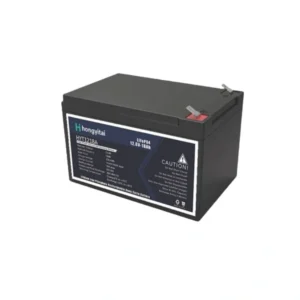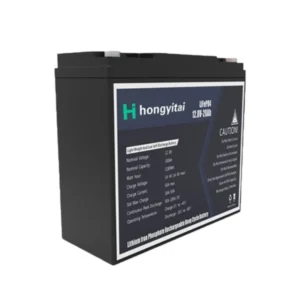12V 12Ah Battery
The 12V 12Ah battery is a common rechargeable energy storage device. The reason why this particular specification occupies an important position in the market and is widely used is mainly due to its good balance between physical size, energy density, output power and cost-effectiveness.
It is commonly used in uninterruptible power supply systems (UPS), security and fire alarm systems, portable medical equipment, emergency lighting devices, small communication equipment base stations, some power tools and toy vehicles, and various customized projects in the hobby and professional fields.
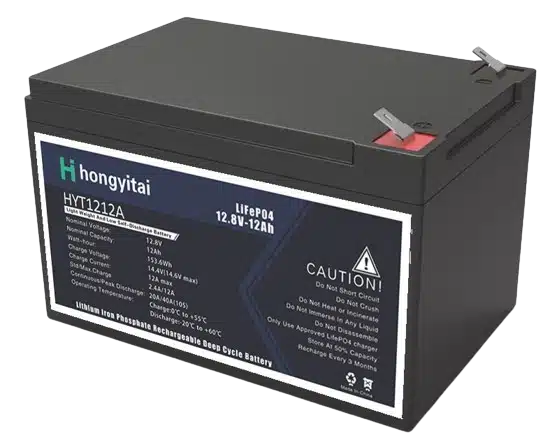
12V 12Ah Rechargeable Battery Specs
-
Work Voltage Range 10.8~14.6V
-
Nominal Voltage 12.8V
-
Nominal Capacity 10Ah
-
Rated Energy 153.6Wh
-
Max Discharge Power 256W
-
Standard Charge Current 2.4A
-
Recommend Charge Current ≤6A
-
Max Charge Current 12A
-
Recommend Discharge Current ≤12
-
Max Continue Discharge Current 20A
-
Peak Discharge Current (10S) 40A
-
Resistance ≤40mΩ
-
Lifespan (25℃,0.5C,80%DOD) >6000
-
Waterproof IP65
-
Weight 1.6Kg
-
Dimensions (Length * Width * Thick) 151*98*95mm
-
Terminal F1
12V 12Ah Li-ion Batteries Comparison
The 12V 12Ah lithium battery market is mainly composed of the following mature chemical systems, each with unique performance characteristics, application advantages and limitations.
Lead-Acid Battery Technologies
Lead-acid batteries are mainly available in two sealed valve-controlled forms in the 12V 12Ah specification:
AGM (Absorbent Glass Mat) / SLA (Sealed Lead Acid)
These batteries use an absorbent glass mat (AGM) to hold the sulfuric acid electrolyte, making them sealed, maintenance-free (no watering required), and leak-proof. Often referred to as sealed lead-acid (SLA) batteries, they have a high level of technological maturity and a stable supply chain.
Its main advantages are significant cost-effectiveness, reliable floating charging performance, and mature and reliable technology. Its main disadvantages are that it is heavy and bulky, has a limited cycle life, and has limited low temperature performance.
GEL Battery
By adding gelling agents such as silica gel to the electrolyte, the electrolyte is made into a gel. This structure further enhances the stability and certain performance of the battery.
Its main advantages include better deep discharge tolerance, wide operating temperature range, and reduced electrolyte stratification. Its main disadvantages are relatively higher cost, strict charging requirements and slightly higher internal resistance.
LiFePO4 - Lithium Iron Phosphate
It uses lithium iron phosphate as the positive electrode material, which is a type of lithium-ion technology. Its molecular structure is stable and its safety is relatively high among lithium-ion batteries. It usually has a built-in battery management system (BMS).
Its main advantages include significant lightweight, extremely long cycle life, high energy density, fast charging capability, high working efficiency and environmental friendliness. Its main disadvantages are higher initial investment, reliance on BMS control, and low temperature charging limitations.
Here is a quick comparison of the technical parameters of these two batteries:
| Parameter | Lead-Acid (AGM/GEL) | Lithium Iron Phosphate (LiFePO4) |
|---|---|---|
| Initial Cost | Lower | Higher |
| Weight | Higher | Significantly Lower |
| Cycle Life | Hundreds | Thousands |
| Energy Density | Lower | Higher |
| Maintenance | Maintenance-Free | Maintenance-Free |
| Safety | Good | Excellent (with BMS) |
| Charge Speed | Slower | Faster |
| Efficiency | Moderate | High |
| Low Temp Performance | Fair | Charging Limited |
| Common Uses | Backup Power, Stationary Applications | Lightweight, High Cycle, Mobile Applications |
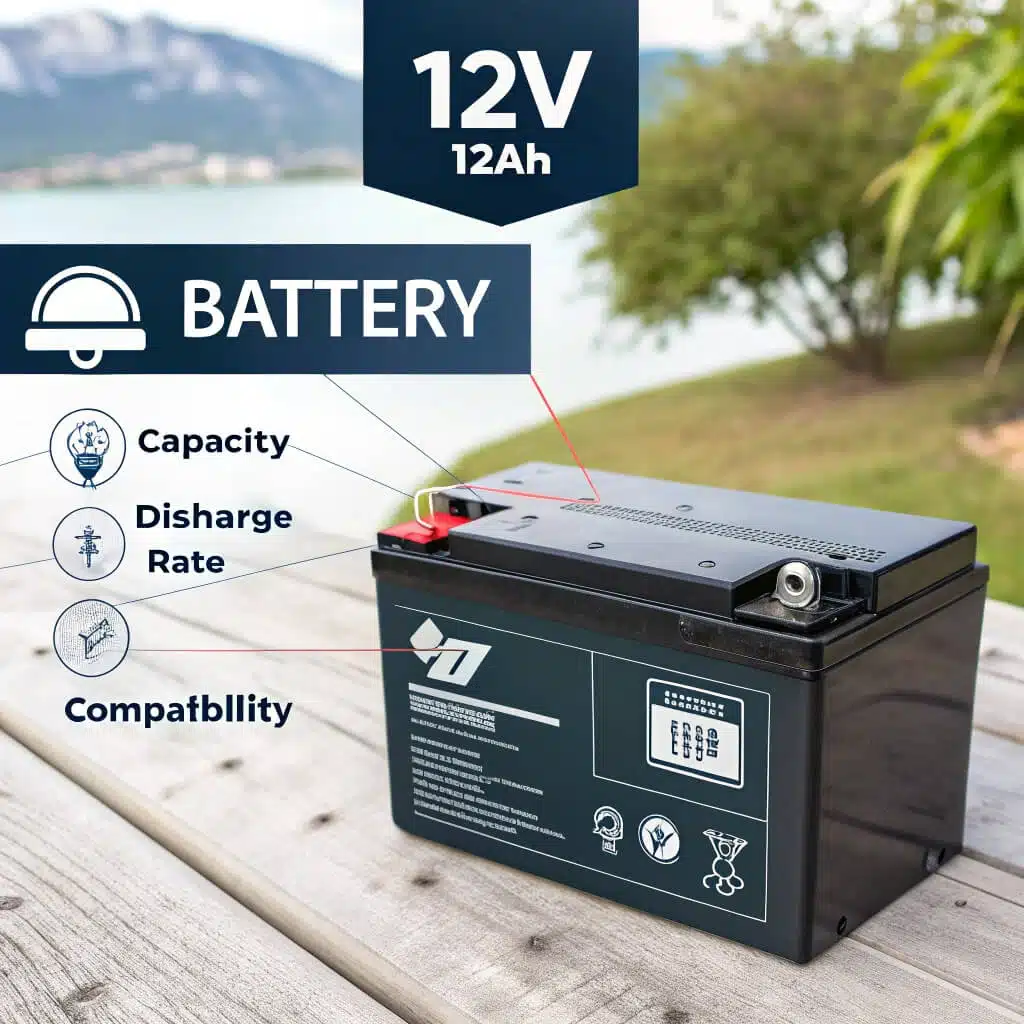
Hongyitai Batery Factory
How to choose the right 12V 12Ah deep cycle battery for you
Application scenario analysis. For backup, floating charge applications (such as UPS, security systems): Prioritize reliability, floating charge life and initial cost. For cycle, power application, energy storage application: Prioritize cycle life, energy density (weight and volume), discharge capacity and charging speed. Lithium iron phosphate (LiFePO4) batteries usually perform better.
Budget. Lead-acid batteries (AGM/GEL): Significantly lower initial acquisition cost, suitable for budget-sensitive projects or scenarios where life is not a high requirement. LiFePO4 batteries: Higher initial investment, but their ultra-long cycle life and low maintenance/replacement frequency may result in lower TCO over the entire product life cycle, especially in high-frequency usage scenarios.
Physical space and weight constraints. LiFePO4 batteries: have significantly higher energy density, are smaller and lighter (typically 1/3 to 1/2 of lead-acid) for the same capacity, and are ideal for space- and weight-sensitive applications (e.g. mobile equipment, light vehicles). Lead-acid batteries: are larger and heavier, and are more suitable for stationary or semi-stationary applications where space and weight constraints are less stringent.
Expected service life and cycle requirements. High-frequency deep cycling: If the battery needs to be deeply charged and discharged frequently (for example, every day), LiFePO4 has a cycle life of thousands of times far exceeding lead-acid batteries (usually hundreds of times), making it a more durable choice. Low-frequency or backup power: If the battery is mainly in backup mode and is occasionally discharged, the cycle life of lead-acid batteries may be sufficient to meet the needs.
12V 12Ah battery charging & storage
To ensure optimal performance, safety, and longest life of your 12V 12Ah LiFePO4 battery, please strictly follow the charging and storage procedures below.
A dedicated charger for LiFePO4 must be used. Always use a dedicated charger that is clearly marked for the Lithium Iron Phosphate (LiFePO4) chemistry and matches the battery voltage (12V nominal, typically ~14.4V-14.6V charging voltage) and capacity (12Ah). Do not use lead-acid battery chargers or other non-LiFePO4-specific chargers.
The theoretical charging time is approximately the battery’s nominal capacity (12Ah) divided by the charger’s constant current output current (A). For example, using a 3A LiFePO4 charger, the theoretical constant current phase time is approximately 4 hours (12Ah / 3A = 4h).
It is recommended that batteries be stored in a cool, dry environment, ideally in the temperature range of 5°C to 25°C (41°F to 77°F). Exposure to extreme heat (e.g. > 45°C / 113°F) or below freezing temperatures must be avoided.
For long-term storage (e.g., more than a month), it is recommended that LiFePO4 batteries be maintained at a partial state of charge of 40% to 60%. This state helps minimize the rate of capacity decay of the battery. It is not necessary and generally not recommended to store the battery fully charged for long periods of time.
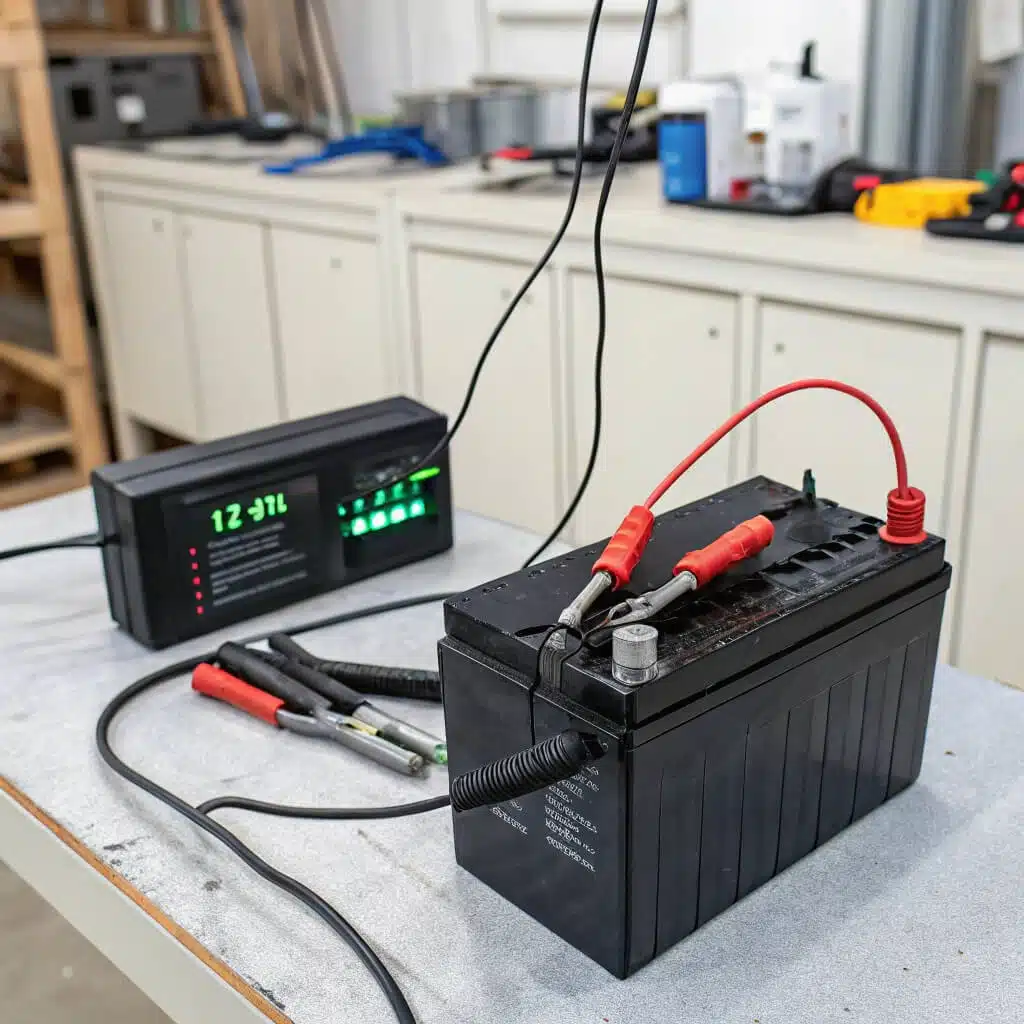
How we produce 12V 12Ah deep cycle battery
#1 Cell Selection
Choose 4 pieces 3.2V 12Ah lifepo4 battery cells from same brands.
#2 Battery Sorting
Make sure each battery cells are consistent. Its capacity, resistance and voltage are within certain ranges.
#3 Arrangement & Assembly
Connecting 4 cells in series increases the voltage (3.2 * 4 = 12.8V), but the capacity remains the same at 12Ah.
#4 Spot Welding
The batteires positive and negative terminals are connected via nickel tabs to form 12 volt 12Ah with nut & bolt terminals.
#5 Solder BMS
Mount 40A protection board on the battery pack to ensure that its overcharge, overdischarge and short circuit protection functions properly.
#6 Packaging & Aging
Embed the battery module into the ABS shell and charge and discharge it once to activate the battery pack performance.

FAQs
You can buy directly on the e-commerce platform, preferably choose good rates listing, such as Tender, Guest. Or you can contact our sales staff.
No matter which method you choose, make sure it supports F2 terminal connection.
Yes, but there are conditions. The key is that the voltage must be the same 12V. The runtime of the 10Ah battery will be shorter, and the runtime of the 14Ah battery will be longer. But you need to make sure the physical size of the new battery can fit into the device.
Yes. Series connection (+ to -): Voltages are added, capacities remain unchanged. The result is 24V 12Ah. Parallel connection (+ to +, - to -): Voltage remains unchanged, capacities are added. The result is 12V 24Ah.
Only identical batteries (preferably of the same type, capacity, and age) can be connected to support series/parallel operation.
This depends on two things:
Runtime per charge: This depends entirely on how much current (load) your device draws. Calculation formula: Runtime (hours) ≈ 12Ah / device current (amps). For example, if the device draws 2A, it will last about 6 hours (12/2=6).
Total life (before replacement): This depends on the type of battery (LiFePO4 lasts much longer than lead acid), frequency of use, depth of charge and discharge, and operating temperature. LiFePO4 is usually good for thousands of cycles or years; lead acid is usually good for hundreds of cycles or years.
Get in touch
Get the 12V 12Ah Lifepo4 battery price today
We will get back to you within 1 working day.

